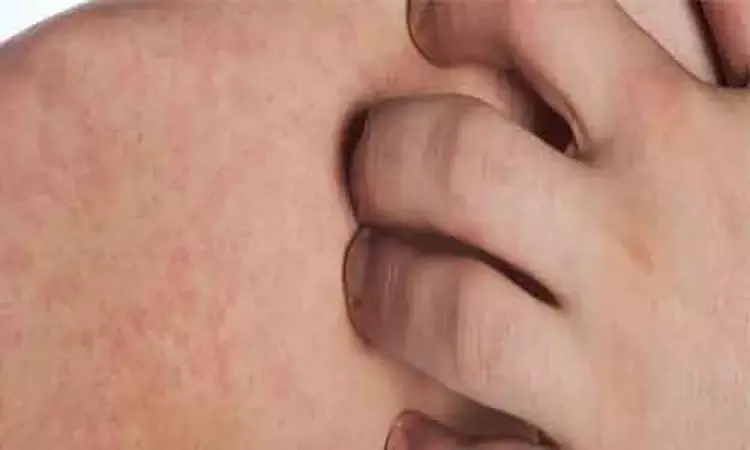- Home
- Medical news & Guidelines
- Anesthesiology
- Cardiology and CTVS
- Critical Care
- Dentistry
- Dermatology
- Diabetes and Endocrinology
- ENT
- Gastroenterology
- Medicine
- Nephrology
- Neurology
- Obstretics-Gynaecology
- Oncology
- Ophthalmology
- Orthopaedics
- Pediatrics-Neonatology
- Psychiatry
- Pulmonology
- Radiology
- Surgery
- Urology
- Laboratory Medicine
- Diet
- Nursing
- Paramedical
- Physiotherapy
- Health news
- Fact Check
- Bone Health Fact Check
- Brain Health Fact Check
- Cancer Related Fact Check
- Child Care Fact Check
- Dental and oral health fact check
- Diabetes and metabolic health fact check
- Diet and Nutrition Fact Check
- Eye and ENT Care Fact Check
- Fitness fact check
- Gut health fact check
- Heart health fact check
- Kidney health fact check
- Medical education fact check
- Men's health fact check
- Respiratory fact check
- Skin and hair care fact check
- Vaccine and Immunization fact check
- Women's health fact check
- AYUSH
- State News
- Andaman and Nicobar Islands
- Andhra Pradesh
- Arunachal Pradesh
- Assam
- Bihar
- Chandigarh
- Chattisgarh
- Dadra and Nagar Haveli
- Daman and Diu
- Delhi
- Goa
- Gujarat
- Haryana
- Himachal Pradesh
- Jammu & Kashmir
- Jharkhand
- Karnataka
- Kerala
- Ladakh
- Lakshadweep
- Madhya Pradesh
- Maharashtra
- Manipur
- Meghalaya
- Mizoram
- Nagaland
- Odisha
- Puducherry
- Punjab
- Rajasthan
- Sikkim
- Tamil Nadu
- Telangana
- Tripura
- Uttar Pradesh
- Uttrakhand
- West Bengal
- Medical Education
- Industry
Type II cryoglobulinemic vasculitis associated with poor prognosis in patients with Sjogren disease: JAMA

A new study published in the Journal of American Medical Association showed that Type II cryoglobulinemic vasculitis was the most common form of cutaneous vasculitis (CV) in individuals with primary Sjögren disease and was associated with poorer outcomes.
A severe and varied side effect of primary Sjögren disease, cutaneous vasculitis (CV) frequently signifies systemic involvement and a bad prognosis. The patient management requires an understanding of its traits and results. Thus, to characterize the clinical characteristics, treatment, and prognosis of various CV types in patients with Sjögren disease, this study was carried out.
The patients with Sjögren disease and CV from the pathology departments of 3 university hospitals in Paris, France (2011–2021), as well as a nationwide case call, were included in this research. The patients were matched 1:2 with controls who had Sjögren illness but no CV and who satisfied the American College of Rheumatology/European League Against Rheumatism criteria.
The existence of a CV categorized by the dermatological addition of the Chapel Hill classification. Immunological data, clinical features, demographics, and therapies received were documented. The incidence and mortality risk of lymphoma, as well as the responsiveness to treatment, were the main outcomes.
Of the 54 patients with Sjögren disease with CV (median [IQR] age at diagnosis: 42 [27.7-56.0] years; 49 [91%] female), the most common classifications for CV were hypergammaglobulinemic vasculitis (15 patients [28%]) and cryoglobulinemic vasculitis (29 individuals [57%]). The incidence of lymphoma was greater in patients with Sjögren disease and CV than in controls (12 of 54 [13%] vs. 4 of 108 [4%]; P =.04).
Type II cryoglobulinemic vasculitis was linked to higher ESSDAI (EULAR Sjögren Syndrome Disease Activity Index) scores (median [IQR], 15 [12-23]; P =.005), higher mortality or lymphoma risk (hazard ratio, 6.8; 95% CI, 1.8-25.5; P =.005), and more frequent kidney involvement (7 of 24 patients [29%] vs 1 of 25 patients [4%]; P =.02) and peripheral nervous system involvement (15 of 24 patients [63%] vs 3 of 25 patients [12%]; P <.001) than other forms of CV. When compared to other therapies, rituximab-based therapy did not improve survival for individuals with type II cryoglobulinemic vasculitis.
Overall, only type II cryoglobulinemic vasculitis was linked to a poor outcome among the CV subtypes in individuals with Sjögren disease in this cohort analysis. For these individuals, early detection and surveillance for systemic complications are crucial. To determine the best treatment approaches for enhancing results, more investigation is required.
Source:
Breillat, P., Le Guern, V., d’Humières, T., Battistella, M., Legendre, P., Lenormand, C., Kottler, D., Mathian, A., Jachiet, M., El Khalifa, J., Mahévas, T., Comarmond, C., Sene, D., Amoura, Z., Gottenberg, J.-E., Mouthon, L., Bouaziz, J.-D., Mariette, X., Chasset, F., … EMSED (Etude des maladies systémiques en dermatologie) study group and the French ASSESS cohort. (2025). Cutaneous vasculitis in primary Sjögren disease. JAMA Dermatology (Chicago, Ill.). https://doi.org/10.1001/jamadermatol.2025.2665
Neuroscience Masters graduate
Jacinthlyn Sylvia, a Neuroscience Master's graduate from Chennai has worked extensively in deciphering the neurobiology of cognition and motor control in aging. She also has spread-out exposure to Neurosurgery from her Bachelor’s. She is currently involved in active Neuro-Oncology research. She is an upcoming neuroscientist with a fiery passion for writing. Her news cover at Medical Dialogues feature recent discoveries and updates from the healthcare and biomedical research fields. She can be reached at editorial@medicaldialogues.in
Dr Kamal Kant Kohli-MBBS, DTCD- a chest specialist with more than 30 years of practice and a flair for writing clinical articles, Dr Kamal Kant Kohli joined Medical Dialogues as a Chief Editor of Medical News. Besides writing articles, as an editor, he proofreads and verifies all the medical content published on Medical Dialogues including those coming from journals, studies,medical conferences,guidelines etc. Email: drkohli@medicaldialogues.in. Contact no. 011-43720751


